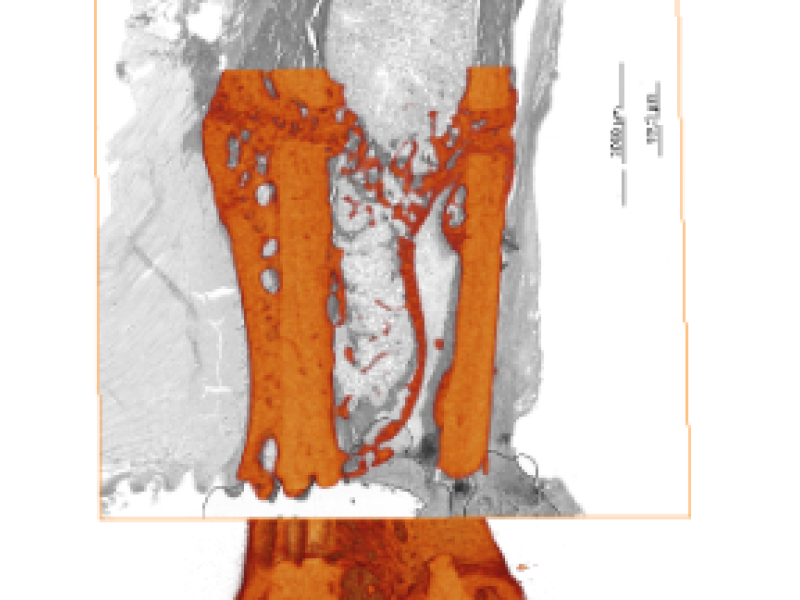The Max Planck Institute of Colloids and Interfaces, Potsdam-Golm, applies various experimental techniques to characterize the micro- and nano-structure of materials such as bone tissue. One specific goal is to understand the temporal and spatial evolution within the healing callus in different animal models to improve the understanding of spatial and temporal characteristics of regenerated bone. 2D imaging techniques (x-ray scattering and fluorescence, ESEM/BSE, histology) and 3D imaging techniques (x-ray computed tomography) have so far been applied separately. Integrating the information acquired by the various imaging techniques into a common reference frame might help improve the understanding of the spatial organization of the bone tissue. The goal of this project is to develop a registration tool to easily integrate 2D images into a 3D image.
